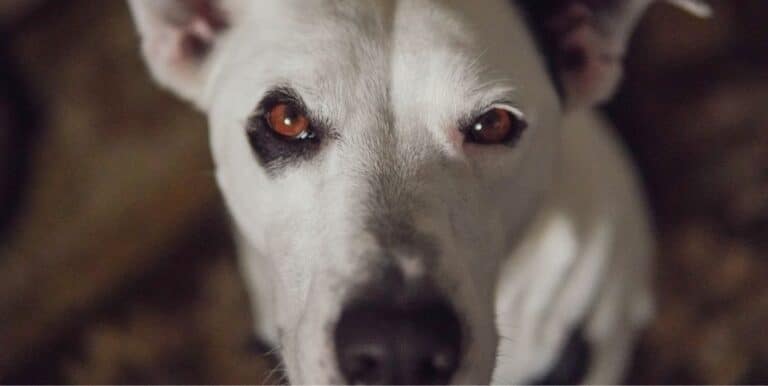What Causes Dog Mouth Blisters?

There are a wide variety of potential causes for dog mouth blisters, including kidney disease, cancer, infection, and dental problems. All of these issues should be treated by a licensed veterinarian. Occasionally a dog may get mouth blisters from chewing on hard objects which may splinter and become lodged in the mouth or cut the dog’s lip or gums. If this occurs, an infection may take root in the abrasion.
As part of a normal physical exam, dogs’ mouths should be checked since oral health can be a good indicator of overall health. Although in many cases the causes of mouth blisters in dogs are benign and fully treatable, sometimes they are cause for concern. Oral cancer and kidney disease can both lead to mouth blisters. In many cases these will be the only noticeable physical symptom that owners detect.

Many times, dog mouth blisters will be caused by underlying dental problems. Gum disease and mouth infections may occur together since bacteria can enter infected gums. Dogs also sometimes chew on things they shouldn’t. Pieces of bone, sticks, or other hard items can sometimes lodge in the gums or cheek and bacteria may enter the wound, causing an infection. If a bacterial infection is to blame for the mouth blisters, the area will likely also be inflamed and red.
More serious conditions may also lead to dog mouth blisters. The most serious of these is oral cancer, which often leads to blisters in the back of the mouth close to the throat. Kidney disease may also cause sores or ulcers to appear in the mouth once the condition becomes severe enough.

Owners who notice blisters in their dogs mouths should first try to alleviate any pain. This can be done through oral numbing medications or other painkillers that have been approved by a veterinarian. Dogs should be examined by a vet as soon as possible after the discovery of a mouth ulcer to ensure that it is not serious. Minor infections and sores will typically be treated with medication, while more serious conditions may require ongoing treatment.
Pet owners should not give their dogs any medication without first speaking to a vet. Dog mouth blisters that are accompanied by bleeding, oozing, or severe pain may require immediate medical attention at an emergency vet hospital. This also goes for dogs that have severe fever, vomiting, diarrhea, or loss of appetite. These could be signs of a serious infection or condition.
Other Dental Health Issues
When searching “What are mouth blisters on dogs?”, you probably end up reading about dental health problems first. This is logical, considering where the blisters are located. Mouth inflammation and ulcers can come from gum disease, bacterial infections, and oral cancers. However, there are less common causes that your vet may check for when examining your dog.
Chronic Ulcerative Paradental Stomatitis (CUPS)
Painful ulcers and inflammation can result from chronic ulcerative paradental stomatitis. With this condition, blisters often appear on the gums and the soft membrane lining the inside of the mouth. If they appear on the gums near the lips, these are called “kissing lesions.” The most common trigger for CUPS is a hypersensitive immune response, particularly to bacteria inside the mouth and plaque buildup on tooth surfaces. Besides the telltale blisters, CUPS comes with other recognizable symptoms:
- Chronic bad breath
- Sore and inflamed gums
- Thick and ropey saliva
- Reduction or loss of appetite
- Exposed bone or “dry socket”
- Scars on the sides of the tongue
Some human guardians notice symptoms of CUPS after their dogs’ teeth have been professionally cleaned. That’s because a thorough cleaning loosens bacteria and plaque. Unfortunately, it’s the overactive immune response that’s to blame for CUPS. Your vet may recommend removing all your dog’s existing teeth to completely eliminate bacteria that typically develop on their surface.
Malocclusions: Overbites, Underbites, and More
Just as humans can experience dental malocclusions, dogs can suffer from them as well. Malocclusions occur when teeth on the upper and lower jaws don’t fit together as they should. You’ve probably heard of overbites and underbites. Lesser-known issues include open bite, in which the front teeth don’t connect when the mouth is closed. Crossbites occur when one or more teeth overlap others when your dog’s mouth is closed. Base narrow canines happen when lower teeth protrude inward, which can injure the upper palate.
When teeth continuously rub against gums and soft tissues, this can lead to irritation and blistering. You may even notice serious mouth injuries that develop blistering in these cases. Symptoms may be similar to CUPS, including a reluctance to eat, excessive drooling, and bad breath.
Other Organic Causes of Dog Mouth Ulcers
Human companions who ask, “What are mouth blisters on dogs?” may also find non-dental causes for their pups’ discomfort. While these can encompass a broad range of conditions, it’s worth taking a look at them to fully understand what causes mouth blisters in dogs.
Allergic Reactions
Unsurprisingly, allergic reactions account for many mouth blister cases in dogs. Allergic ulcerative disease results from environmental or food triggers, again prompted by an overreactive immune system that mistakes them for harmful substances. The immune system goes on red alert, but its extreme response can cause a variety of problems.
Allergic ulcerative responses can result from eosinophilic granuloma complex disease, a set of skin conditions that are more typically seen in cats. But dogs can develop them, too, especially caused by insect bites and stings. The dog’s immune system reaction usually prompts swollen red nodules shaped like cauliflowers or mushrooms to appear in the mouth. However, blisters and ulcers are also possible outcomes.
Diabetes
Diabetes has been linked to oral health problems in humans, so it’s no surprise that the same is true for dogs. Consistently elevated blood sugar levels can damage organs and tissues, including the soft gums and membrane lining of the mouth. Over time, these high blood sugar levels can trigger mouth ulcers and inflammation. Uncontrolled diabetes can also lead to periodontal disease in dogs. Proper blood sugar control is essential to preventing these problems.
Cushing’s Disease
While Cushing’s disease may not directly cause mouth ulcers in dogs, it can be a contributing factor. Cushing’s disease occurs when a noncancerous tumor grows near or on the pituitary gland. This tumor triggers an overproduction of cortisol, a hormone that regulates bodily processes during times of higher stress. At excessive levels, cortisol increases blood sugar levels — and this may eventually lead to diabetes. When blood sugars remain too high, they can trigger dental and oral health problems such as mouth blisters.
Hypothyroidism
Dogs affected by hypothyroidism may develop a wide range of symptoms. That’s because their thyroids don’t produce enough thyroxine, a key hormone that helps break down food into essential fuel their bodies can use. In turn, a dog’s metabolism can slow down. Hypothyroidism impacts the entire body because metabolism also plays a part in cellular reproduction. Skin and fur problems are common in dogs with this condition, but they can also experience mouth ulcers that don’t seem to heal.






